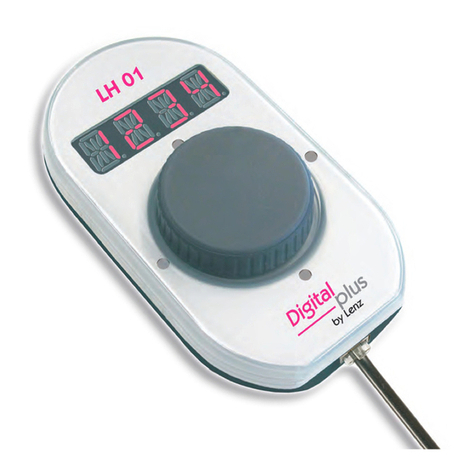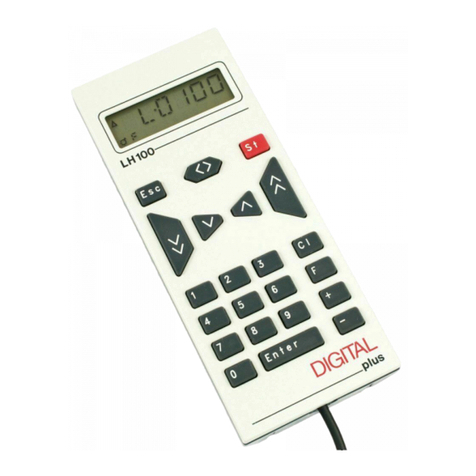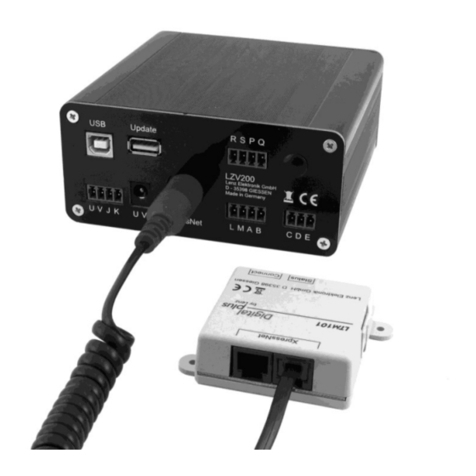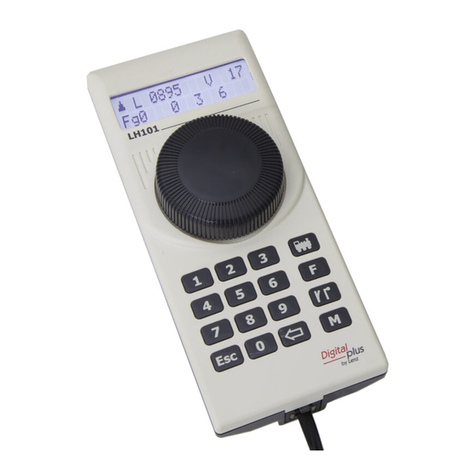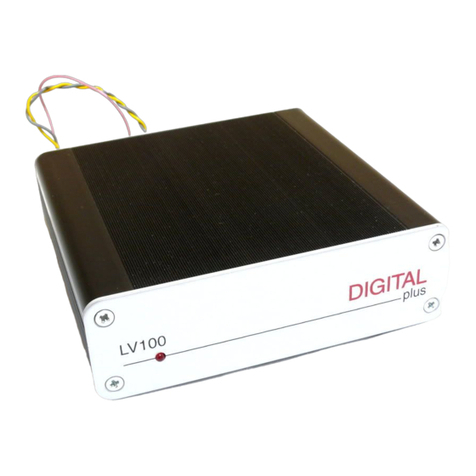
8 Update LZ100 / LZV100 and LH100 to Version 3.6
2.5 Configuring locomotive decoder functions
Functions F1 to F12 of the locomotive decoder can be set to
continuous or temporary operation.
Continuous operation Temporary operation
Press the key to activate the
function; press the key again to
deactivate it.
Press the key to activate the
function; release the key to
deactivate it.
This information is stored in the command station LZ100/LZV100.
When calling the locomotive, the manual control queries the setting
from the LZ100/LZV100. This setting can be made individually for
each function and each locomotive address.
Proceed as follows:
13 8
Select the address of the locomotive
whose function setting you want to
display or change.
The menu that was selected
last is displayed.
23 78
The configuration of function group 1
(functions 0 to 9) is displayed first.
The figures in the bottom line show the function settings:
Visible functions: Functions are set to continuous
operation (here 9, 2, 3, 7 and 8).
Invisible functions: Functions are set to temporary
operation (here 1, 4, 5 and 6).
To change the setting, simply press the number key corresponding to
the function.
14 8
Press '+' to change to the next
function group (group 2, F10 to F19).
The setting is made analogously to
group 1.
12 45 78
Press '+' again to change to function
group 3 (F20 to F28).
The setting is made analogously to
group 1.
